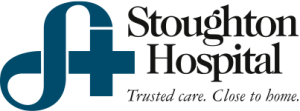Tag Archives: evidenced based practice
Best Practice for reducing pain with placing the PIV
I had an opportunity to review some of our patient satisfaction surveys. It wasn’t surprising to me that many concerns were about the peripheral IV insert. One patient even stated “It was the most painful thing I ever had
Leading the team
When we look at best practice, improving patient outcomes, implementing evidenced based protocols in the insertion, care and maintenance of vascular access devices, we have to look at nurses to be the leaders. Nurses are becoming the coordinators, leaders, teachers,
Add on devices, are you using them?
Connectors and Caps can play a key role in preventing complications with our vascular access devices. Caps can eliminate the compliance issue with scrubbing. Data states to “scrub” for 15 seconds before attaching your syringe. When you count this
Sorbaview Shield Dressing
AVA Journal article published in 2011 discusses the importance of the securement device for the most common acute invasive procedure, the PIV. With all the PICC’s, Port’s and Central Catheters getting all the attention these days, we must nor forget
WISVAN
Attended the WISVAN (Wisconsin Vascular Access Network) meeting last night at Fleming’s Steak House in Madison. The Dinner was sponsored by Jenna Mathison at BARD Access System. Thank you Jenna for a great dinner and presentation on your new Midline.
VAD Complications
Spent 24 hours over the past two weeks working with nurses on how to prevent complications from Vascular Access Devices at our annual skills fair. The most important thing to do with every patient no matter what device you are
VAD class at Blackhawk Technical College
A big thank you to the nursing students at Blackhawk Technical College. Today we discussed many topics related to Vascular Access Devices. With all the different types of catheters, connectors and caps in our facilities, it is very difficult
Beijing China: PICC Trends
I will be speaking at INS in Beijing China on 7/27 on “Trends in PICC Line Selection” in the US. There is a trend to choose the CT compatible PICC line for our patients. One line for all therapies. When







